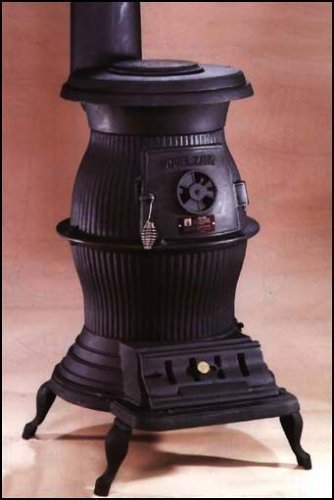Pot Belly Stove
Pot belly stoves are one of the most recognizable types of antique wood stoves. Many old pictures depict people gathered around a hot pot belly stove on cold winter days. There are many reasons for the continuing popularity of pot belly stoves.
These stoves were very popular in past generations before the rise of gas and electric heating. They were common heat sources in houses or in public places as they were simple to run and economical for the time. Wood was very often the cheapest and most readily acessible fuel and thus these stoves fit in well with the American economy. These stoves tended to be smaller and easier to maintain than larger box style stoves.
Pot belly stoves are made of cast iron. Manufacturers would use thick metal layers so that the stove would hold the heat longer and be more efficient with the wood fuel. These stoves are recognizable for their distinctive fat middle section which protrudes out from the rest of the unit. This middle section holds the fuel and spent ash. This design makes it more efficient in radiating the heat in all direction. Smaller cast iron legs support the stove but on occasion a metal box may support the stove.
Pot belly wood stoves should have at least 42 inches of clearance on all sides to allow room for the heat to escape naturally. They will also need a chimney escape for the exhaust gases and room below to manage the ash as the fuel burns.
Pot belly stoves historically used wood for fuel but can be modernized to use different types of fuel. Gas conversions are very common but many now use wood pellets or grains as well. Stainless steel versions are available that can more closely match modern appliance décor in the home. These versions often have glass doors as well which adds to the modern touch.

